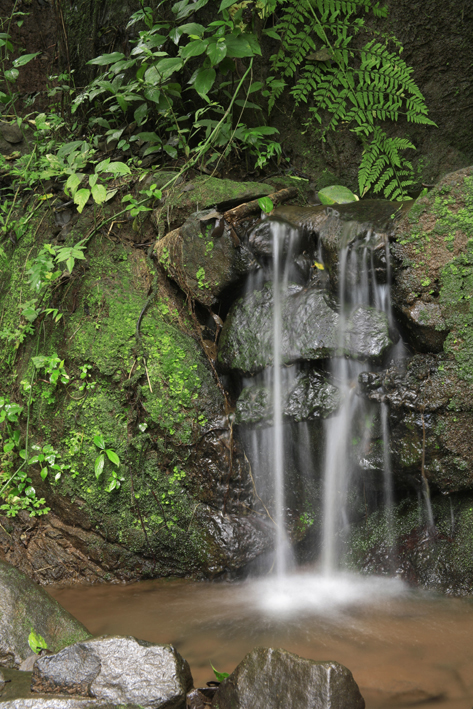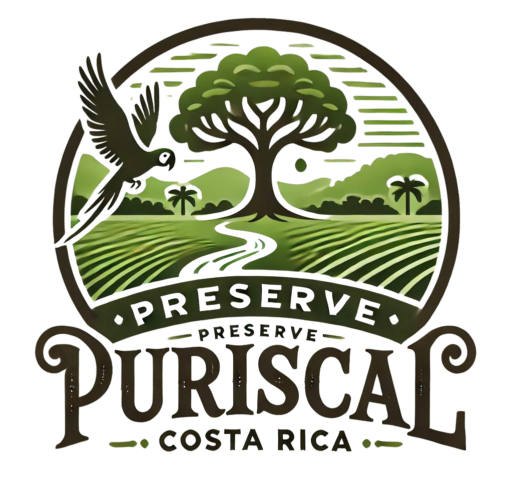
Did you know Costa Rica is home to about 5% of the world’s biodiversity? Puriscal Costa Rica is a key part of this rich ecosystem. It’s surrounded by lush mountains and vibrant landscapes. This place shows how sustainable development and nature can work together.
Puriscal is just 30 minutes from the Pacific coast and is full of eco-friendly activities. It’s perfect for both visitors and locals. You can explore the diverse plants and animals or join in community projects. This makes Puriscal a key area for conservation in Central America.
Breathtaking Biodiversity in Puriscal
Puriscal is a standout region, rich in biodiversity. It boasts a wide variety of plants and animals, making it a key part of Costa Rica’s natural beauty. Costa Rica is home to over 5% of the world’s biodiversity, protecting 25% of its land to keep these ecosystems alive.
Flora and Fauna Diversity
Puriscal’s diverse landscape is home to many plant and animal species. You can find over 2,000 plant species, including rare orchids and plants with healing properties. Costa Rica is a hotspot for orchids, with about 1,200 species, and ferns, with around 800 species.
Wildlife lovers will be thrilled to see mammals, birds, reptiles, and amphibians. The country has 200 mammal species, 850 bird species, and 220 reptile species. The rainforests around Puriscal are alive with monkeys, sloths, toucans, and poison dart frogs, often seen in La Cangreja National Park.
Importance of Endemic Species
Protecting endemic species is key to keeping Puriscal’s ecosystems balanced. These unique species are important to local communities. By saving these plants and animals, we also protect traditional ways of life.
Endemic species flourish in Puriscal’s different ecosystems, like tropical wetlands and primary dry forests. This shows why Puriscal is vital for conservation efforts in Costa Rica.
Strategic Location for Ecosystem Conservation
Puriscal is a key spot for saving ecosystems. It’s close to parks like La Cangreja, making it vital for keeping nature in balance. This area helps many species by linking them through wildlife corridors.
Proximity to National Parks and Wildlife Corridors
Puriscal is easy to get to from San Jose and the Pacific coast. This lets animals move freely between safe areas. These corridors help animals stay healthy by mixing their genes, which is key for their survival.
Next to these parks, Puriscal’s green areas are crucial for nature’s health. They give animals food and shelter, letting different species live well. Saving this land helps animals and also brings people together with nature through tourism.
Puriscal Costa Rica: A Hub for Sustainable Development
Puriscal is a key spot for sustainable growth in Costa Rica. It blends economic growth with caring for the environment. This makes it crucial for protecting nature. Farmers here focus on methods that keep the ecosystem safe while feeding the community.
The Role of Agriculture in Conservation
Agriculture is crucial in Puriscal for both the local economy and sustainable development. Farmers use eco-friendly methods, such as:
- Organic farming, which avoids harmful chemicals, keeps soil healthy.
- Agroforestry systems, where crops and trees grow together, boosting nature’s variety.
- Methods that cut down deforestation and farming’s carbon emissions.
These sustainable farming ways help Puriscal improve the local food supply and protect nature. The community also offers rural tourism, letting visitors join in farming activities. This helps people understand how farming helps conservation. So, Puriscal leads in showing how farming can support the environment and help communities grow.
Community Involvement in Reforestation Projects
Getting the community involved is key to reforestation success in Puriscal. Local groups encourage people to help with tree planting and fixing habitats. This teamwork not only brings people closer but also teaches them to care for the environment. Groups and eco-villages offer chances for volunteers to help and learn about local plants and animals.
Local Initiatives and Volunteer Opportunities
In Puriscal, many local groups work on reforestation and being green. VerdEnergia is a big name in this field, starting in 2006 and planting over 150,000 trees. The community makes it simple for locals and visitors to join in with projects like:
- Helping with tree planting events.
- Working in community gardens.
- Going to workshops on permaculture and taking care of the land.
- Doing things that help the environment and protect habitats.
Impact of Community Engagement on Habitat Preservation
When communities work together on reforestation, it makes a big difference for nature. Locals not only grow more trees but also make ecosystems stronger against climate change. For example, in San Isidro de Peñas Blancas, over 500 trees have been planted since 2021. This shows how community efforts can really improve the area’s wildlife. It also builds a better place for all living things and strengthens community bonds, showing why working together is key for protecting nature.
Water Resource Management and Watersheds
In Puriscal, managing water resources well is key to keeping the environment safe. Watersheds are important because they collect and move water. This water is vital for farming and protecting wildlife. If we don’t manage these watersheds right, the water quality and wildlife could suffer.
Importance of Watershed Conservation
Keeping watersheds safe is crucial for clean water and healthy ecosystems. Laws like the Law of Waters from 1942 and the Forest Law of 1996 help manage watersheds. These laws have made things better, but there are still problems like pollution and unfair water rights.
Future Strategies for Sustainable Water Use
To use water wisely in Puriscal, we might do the following:
- Use rainwater systems to increase local water supplies.
- Keep natural filters clean to ensure good water quality.
- Teach the community about using water wisely to get everyone involved and informed.
Changing policies to see water as an environmental right could make water use fairer. Finding a middle ground between politics and community needs is key. This way, we help both people and nature.
Carbon Sequestration Benefits in Puriscal
The forests around Puriscal are key natural carbon sinks. They help in fighting climate change by taking in carbon dioxide. These forests make the air cleaner, which is good for people and animals living nearby. They also support tourism and farming that is good for the planet.
Forests as Natural Carbon Sinks
Costa Rica has worked hard to grow more forests. This includes fixing damaged lands and adding new trees. The goal is to get forests to cover about 60% of the country soon.
Forests do more than just store carbon. They are home to many plants and animals, making Costa Rica very biodiverse. They protect water sources and help farmers make more money while being kind to the earth.
- Habitat for diverse flora and fauna, contributing to Costa Rica’s position as one of the most biodiverse countries in the world.
- Protection of watersheds that are vital for sustainable water management.
- Support for local economies through sustainable agricultural practices, increasing farm profitability while lowering carbon emissions.
Puriscal is showing the world how to live with nature. It’s all about taking care of the environment and helping communities thrive together.
Ecotourism as a Tool for Conservation
In Puriscal, ecotourism is a key way to help protect nature. It lets travelers connect with the environment and support the local economy. By choosing responsible travel, visitors help save the area’s rich biodiversity. This includes about 12,000 plant species and many animals, like unique birds and mammals.
Puriscal’s beautiful landscapes touch the heart and teach the importance of caring for nature. This makes visitors want to travel responsibly. They learn to respect the environment.
Promoting Responsible Travel to Preserve Nature
Local businesses in Puriscal are now focusing on eco-friendly services. This helps reduce their impact on the environment. It makes sure tourism doesn’t harm nature too much.
Visitors can join guided tours that teach about plants and animals. These tours help people learn about nature and how to protect it. This is important for keeping Costa Rica’s forests, which cover over 52% of the land, safe.
Initiatives like the CRx5 Challenge push ecotourists to visit more National Parks. This helps the community and the environment. When tourists visit places like the Curu Wildlife Refuge and organic farms, they spread the word about protecting nature.
These efforts show how ecotourism can change lives and protect the planet for the future. It makes travel meaningful and helps the environment.
